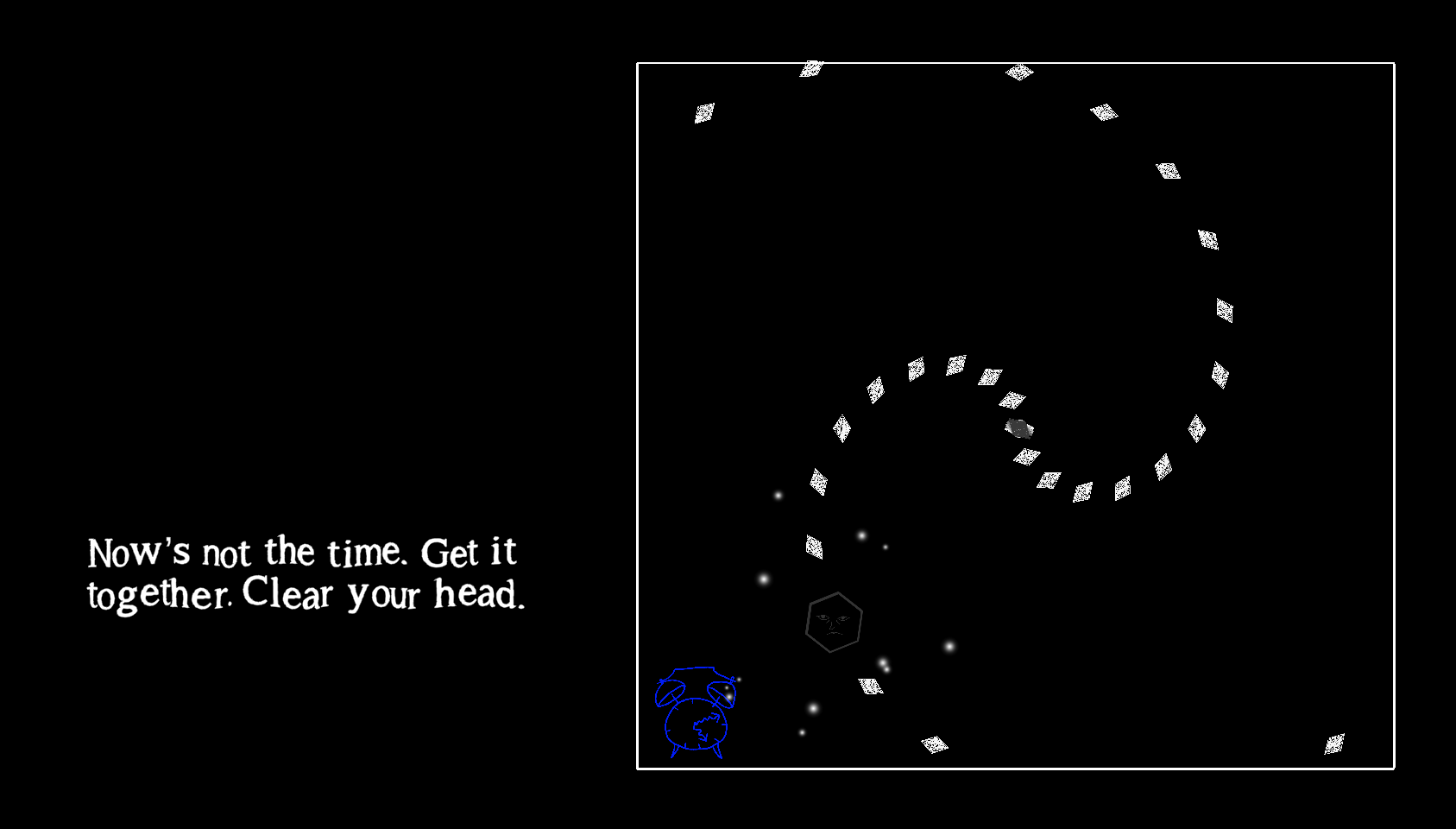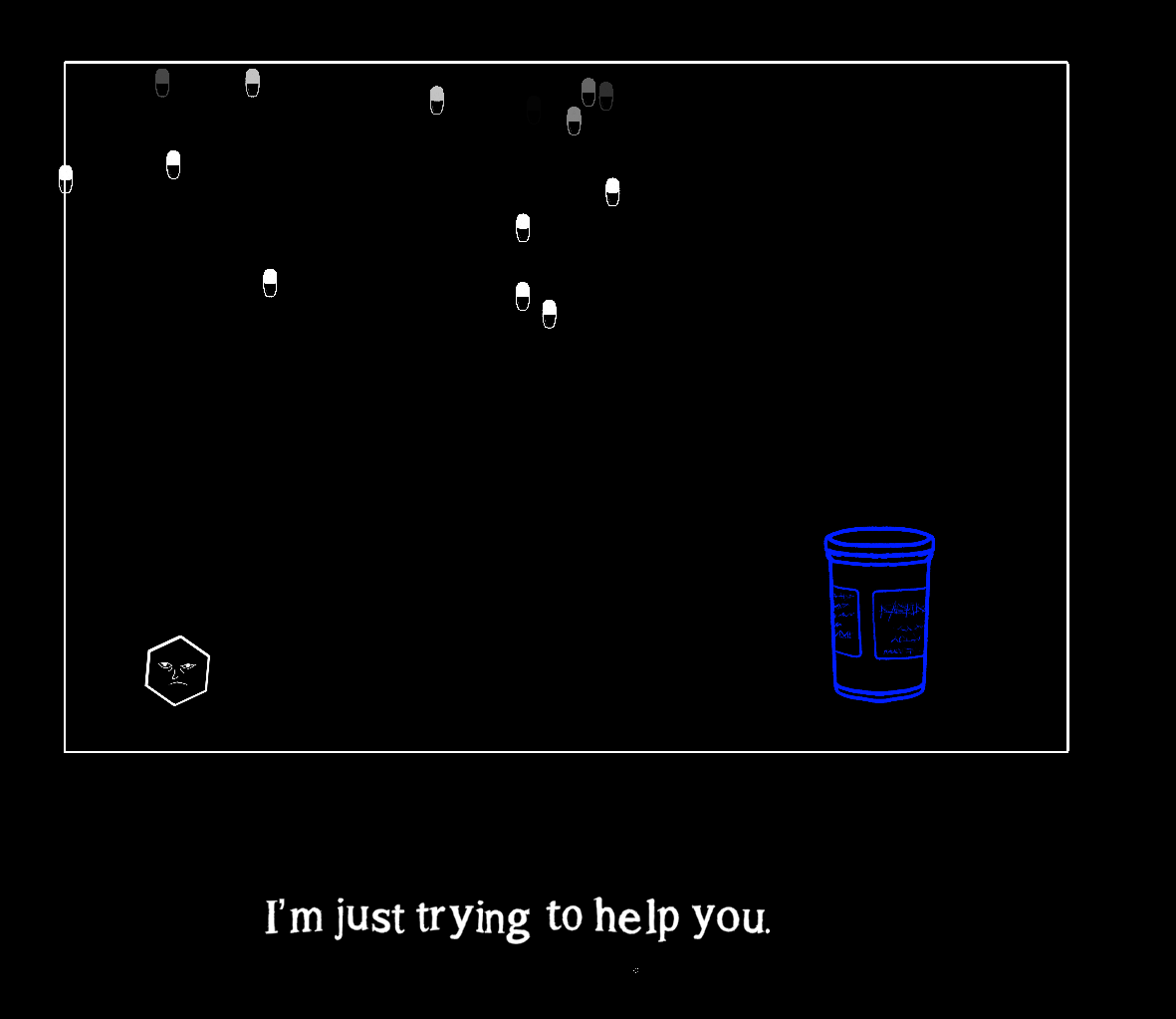Still…
Still... is an interpretive game experience about getting through the struggle of daily living, where players move through different rooms and tasks to reach different checkpoints of their unproductive day. This project aims to illustrate how mental illnesses can hinder someone's progress or ability to push through each day for even the simplest of tasks.
Our team, comprised of Ellie Clendenning (Programming), Cassie Hui (Visuals, Narrative, and Project Management), Munro Provine (Audio and Level Design), and me (UIUX & Asset Design) worked to blend a bullet hell game with a narrative-based experience. I personally worked as a UI/UX designer and implementor, working on character/asset design while implementing programming for movement, health systems, and text effects.
Gameplay
Still... is an interpretive experience, where players use the Arrow Keys to dodge and navigate through each level to reach objects that progress your productivity. By the end, players should get the sense that the gameplay centers on the struggle of making it through each day of life. The game ends with a new day beginning and the day is reset, suggesting that daily life is simply an ever-repeating cycle.
Character
A blank slate, I think I can see a bit of myself in them…
This characters design is a simple, spinning hexagon with a melancholy look in its center. This design was to mimic games like geometry dash while adding a more unsettling face in its center to create an empty feeling character that can act as a player self-insert.
Movement was programmed to feel smooth and the character's face animates and blinks slowly, cycling between frames. Below are the assets I created to populate each room, with a hand-drawn chalk-like aesthetic.
Player Feedback
In this project, I challenged myself to take away some of the visual elements of bullet-hells to keep the gameplay simple and clear.
The character is designed to only display its health via a fading opacity in its sprite and damage effects. By removing a health bar, the character allows for subtle player feedback and makes this game appear with more minimalist aesthetic, allowing for a greater focus on the narrative.
User Interface
Text effects were scripted to give the user interface its shakiness, using a coroutine to write text out character by character with warping. As such, this paired well with the visuals and narrative, as an extra visual flair to make our narrative messages feel more emotionally effective.
Playtests
This game was one that our team specifically designed to iterate from playtest feedback on narrative interpretation.
Through the use of questionnaires, we were able to gauge the difficulty of the game and also see how clear and open-ended our narrative experience was felt by players. These ultimately help us make better improvements and adjustments to the narrative interpretation and design of the project.




















